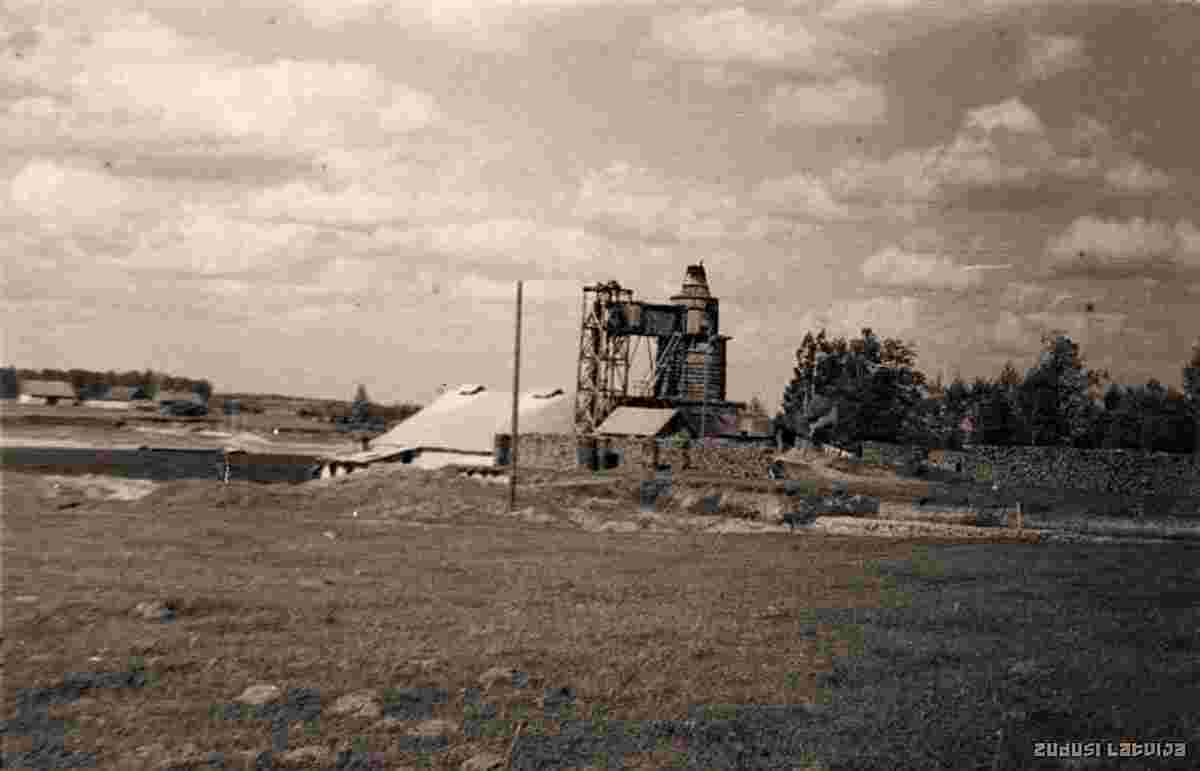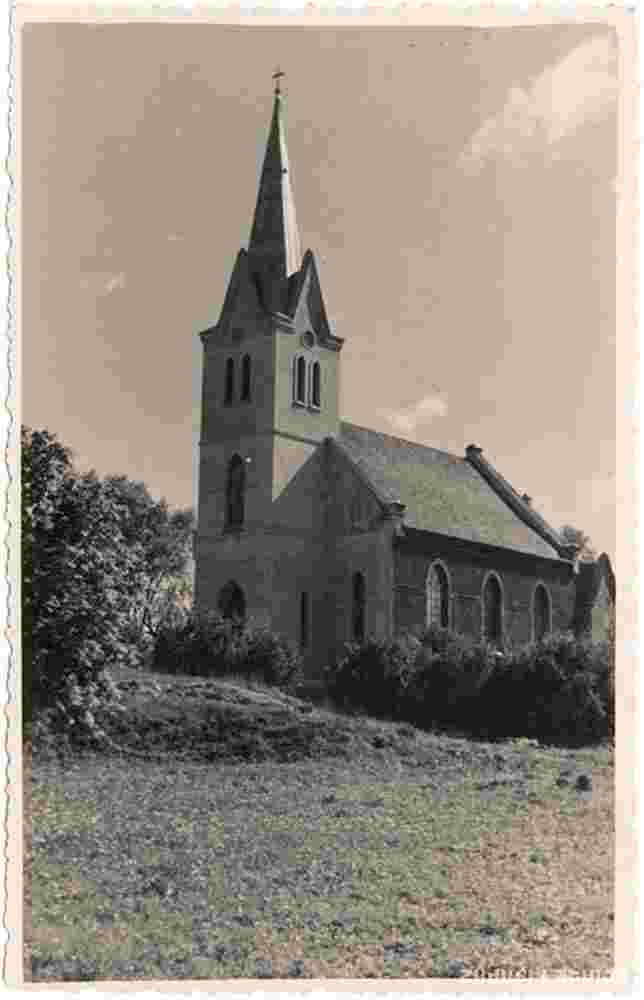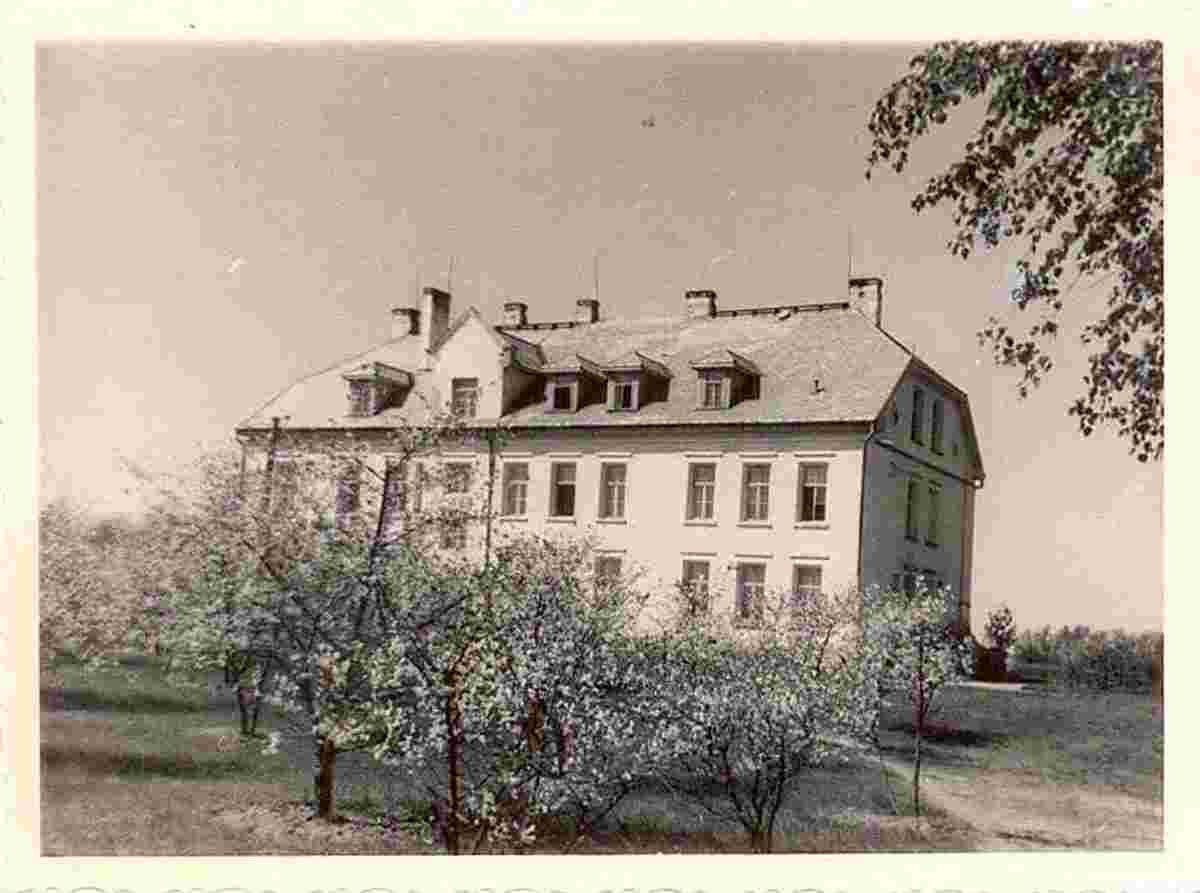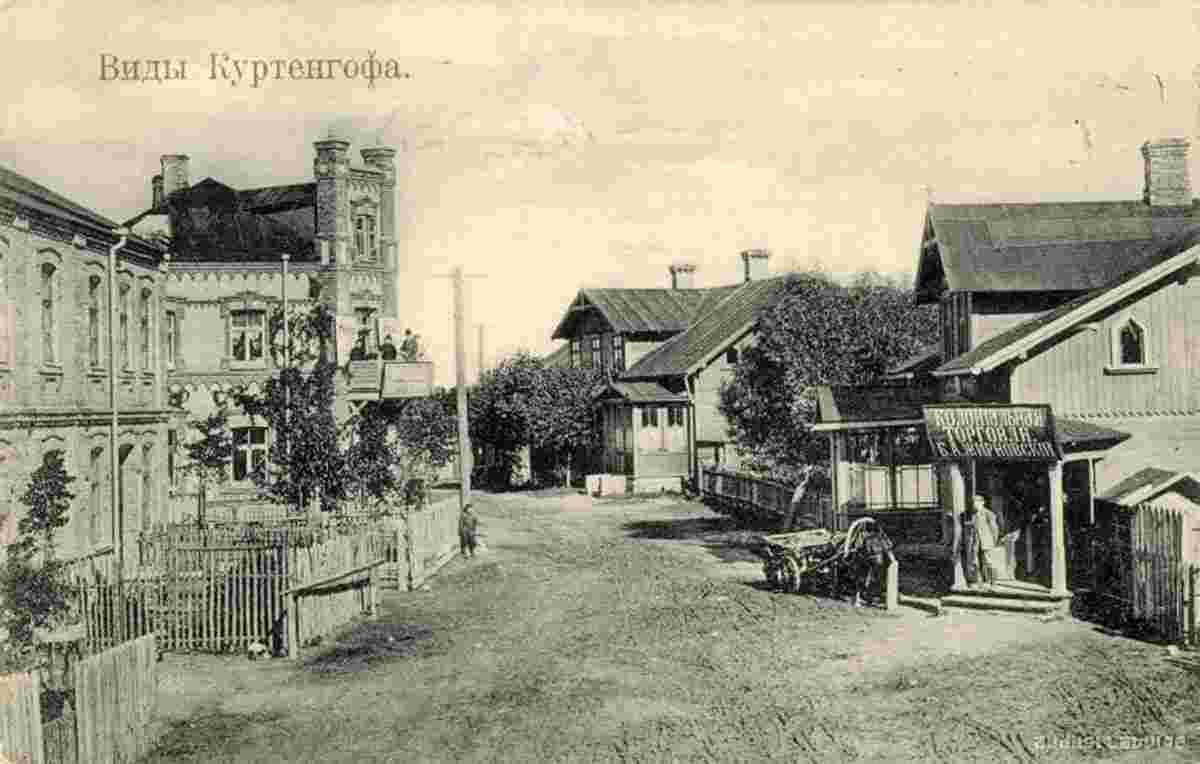Historical and old photos of Salaspils (german - Kirchholm)
HistorySalaspils is one of the oldest settlements in Latvia. Archaeological excavations of 1964–1975 (during the construction of Riga HES) in ancient settlements, burial grounds and castle mounds give evidence of very dense population of the region. At this time, the remains of 11,000-year-old reindeer hunters were found (the oldest known human settlement in all of Latvia) and 3500-year-old remains of Baltic hunters, buried in hollowed-out oak-tree trunks, were found as well. There is evidence that both Livs and Balts built hill forts in the region. At the end of the 12th century, German merchants travelled up the Daugava, establishing missionaries among the Livonian settlements. One important centre of Daugava Livonians, the small island Mārtiņsala (German:Kircholm) had a Christian church as early as 1186. So began the Christianizing and gradual subjection of the local Livonian tribes. In 1206, in the early phases of the Livonian Crusade, the Livonian chieftain Ako organized the first revolt against the German crusaders but suffered defeat. The Latvian name of the Salaspils "island castle" is probably derived from Mārtiņsala Island castle, but the Germanized name Kircholm – from the Mārtiņsala Island church. Both names were used when referring to the territory on the northern bank of the Daugava. In 1380 the Livonian Order built the castle (Neu-Kircholm) on the mainland, with St George's church by it. The castle was an important support-point outside of Riga, and a small town grew up around it. Both the castle and village were destroyed in 1577 during the Livonian War. In 1605 the village was a site of the Battle of Kircholm in which forces of the Polish–Lithuanian Commonwealth defeated a much more numerous army of Sweden. This was the biggest battle of the Polish–Swedish War. The battle took place near St George's church and about 9000 Swedish soldiers were buried there. Two memorial stones in Salaspils commemorate of one of the biggest battles in Europe in the 17th century – in memory of the victory of the Polish–Lithuanian forces. Up to the second part of the 20th century a magnificent 17th century military fortification near the Daugava – the Swedish rampart. The destroyed church was renovated in 1631, but later – in 1896 and 1923 - rebuilt. In the 17th–19th century the surrounding area of Salaspils was governed by the Salaspils Estate which, was established near the destroyed Order’s castle and was a part of Riga since 1630, and the Kurtes Estate which was situated in the territory of present Līvzemes street in Salaspils. The Riga–Daugavpils railway opened in 1861, and the new center of the town developed near Salaspils station just opposite the Kurtes Estate. In the second part of the 19th century, military summer camps were organized in the territory of Salaspils and an Orthodox church was built into a garrison. During the World War I, the front line was at Salaspils for two years, and many of the buildings and farmsteads, especially along the river, were destroyed. The infamous battles at Nāves Sala and Mazā Jugla were fought nearby. During the first Republic of Latvia there were three parishes in Salaspils territory – Stopiņi, Salaspils (Ķesterciems) and Dole. Origin: en.wikipedia.org | ||||||||||||
 |
Historical and old photos of Salaspils (german - Kirchholm)
Salaspils vēsturiskās un senās fotogrāfijas (vāciski - Kirchholm) |
| Main page • Countries of Europa • Cities of Latvia |
| Robinson Rd, CB 13862 Nassau, NP, The Bahamas |







